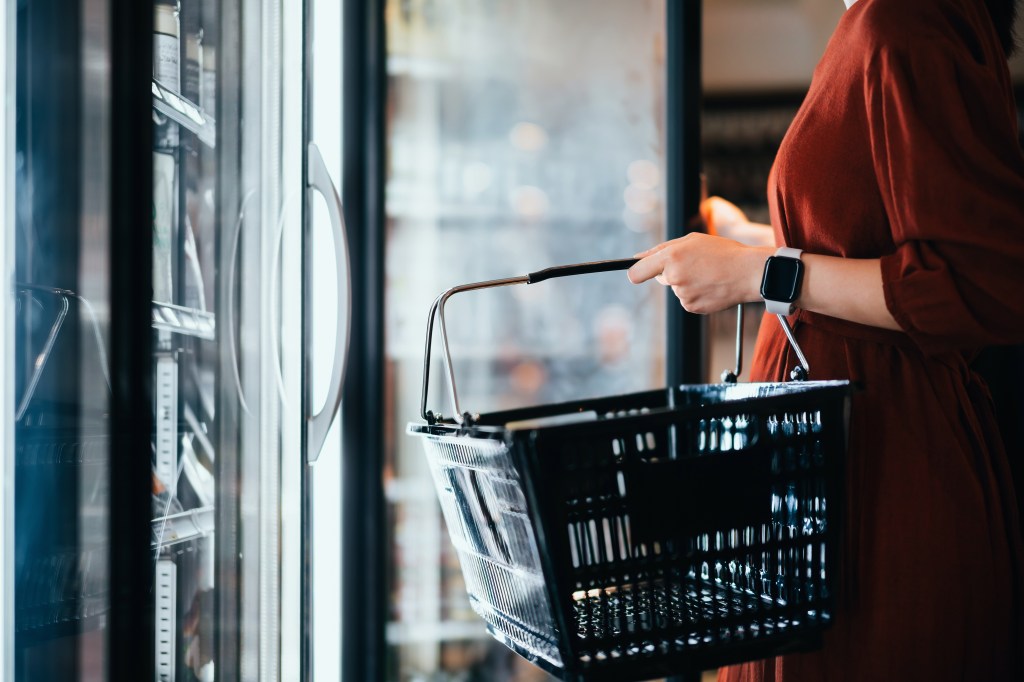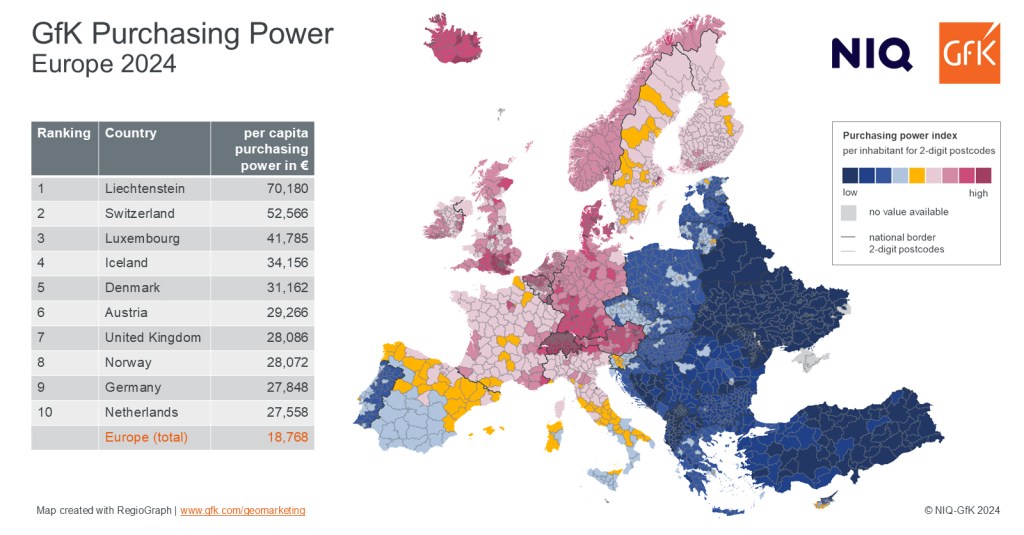Over the past decade, consumer health trends have been influenced by advancements in science, aging populations, and rising affluence. These changes have contributed to an increased focus on personal health across the globe, as time-starved professionals look for ways to live healthier, more balanced, and active lives.
“Consciousness and focused attention on health and wellbeing has been rising globally,” says Eric Wagatha, Head of Consumer Life at GfK. “We are living longer, so we want a healthier, and more productive life,” he notes. In fact, globally, life expectancy has increased by more than 6 years between 2000 and 2019, according to the World Health Organization.
The past 18 months have only continued these health trends, with the pandemic focusing consumers on the crucial importance of good personal health and hygiene. This trend has sparked an evolution in attitudes from East to West, prompting more people to take greater ownership of their wellbeing.
But the real question for brands as they look for opportunities in this space is: which behaviors and attitudes are here to stay and which ones will wane?
Consumer health trends: A look back
Health and fitness have been a focus for consumers for several years for a myriad of reasons, including improvements in medicine, heightened awareness, information sharing, and increased prevalence of stress. All of which have encouraged consumers to search for ways to improve their well-being.
This increased focus on health trends is reflected in consumer purchase decisions and consumer health data, with GfK’s latest Health, Hygiene and Wellbeing report showing that in the EU4 countries of Germany, France, Italy, and Spain, 49% of consumers now actively seek solutions that support a healthier lifestyle. That’s risen from 37% in 2015.
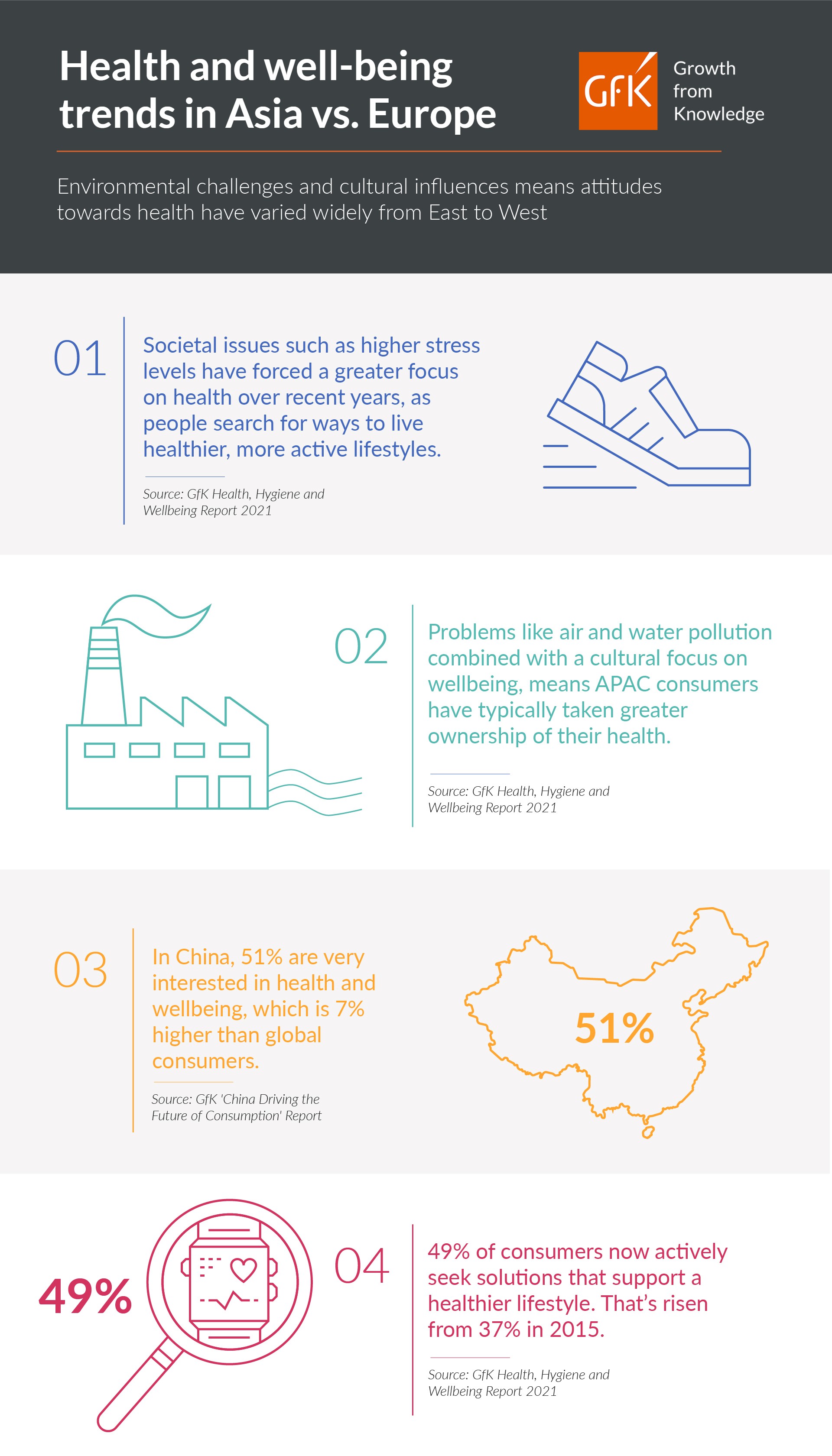
Sales of fitness trackers that monitor health data, such as exercise and sleep, have been increasing, and, in 2019, worldwide shipments jumped 32% to about 68.2 million. Alongside this, apps that support physical and mental health have been growing. For example, the top mindfulness and meditation apps drew $195 million in revenue in 2019.
As consumers pay greater attention to their health, they’re increasingly taking more ownership of their overall wellbeing and focusing more on prevention than cure. Now, 48% of consumers say they rely on both prevention and treatment to maintain health. That consumer health trend is up from 34% in 2013, according to GfK’s Health, Hygiene and Wellbeing report from April 2021.
COVID-19 shines a light on health as a priority
The emergence of COVID-19 has shone a spotlight on health as a top priority for people everywhere. From bans on social gatherings to lockdowns and vaccination programs, protecting health through virus prevention has been the number one focus globally and this has accelerated several new health trends.
The use of virtual doctors’ appointments or telehealth has increased as much as 38x from pre-pandemic levels, with doctors and patients enjoying convenience and efficiency. Gym closures and limits on outdoor exercise have also triggered a surge of home exercise equipment and solutions, such as virtual classes.
With people reporting higher stress levels through the pandemic, apps that support mental health experienced strong demand. In fact, the world’s 10 largest English-language mental wellness apps saw a combined 2 million more downloads in April 2020 compared to January of the same year, reaching close to 10 million total downloads for the month.
But one of the interesting new consumer health trends to emerge due to the pandemic is an increased focus on hygiene, particularly in Western countries where basic hygiene is often taken for granted.
Eric explains, “In the Western world, basic hygiene was not something you tended to think consciously about. But the role of hygiene, pollutants and clean water has been an ongoing theme in developing markets such as China.”
In fact, 51% of Chinese consumers are very interested in health and wellbeing, which is 7% higher than the typical global consumer, according to GfK’s China Driving the Future of Consumption report.
The COVID-19 pandemic has made hygiene, sanitation, and cleanliness a top priority for consumers everywhere, empowering more people to take greater personal responsibility for their health. Now, as many as 48% now say they rely on a combination of prevention and treatment to maintain their health, up from 34% in 2013, according to GfK’s Health, Hygiene and Wellbeing Report April 2021.
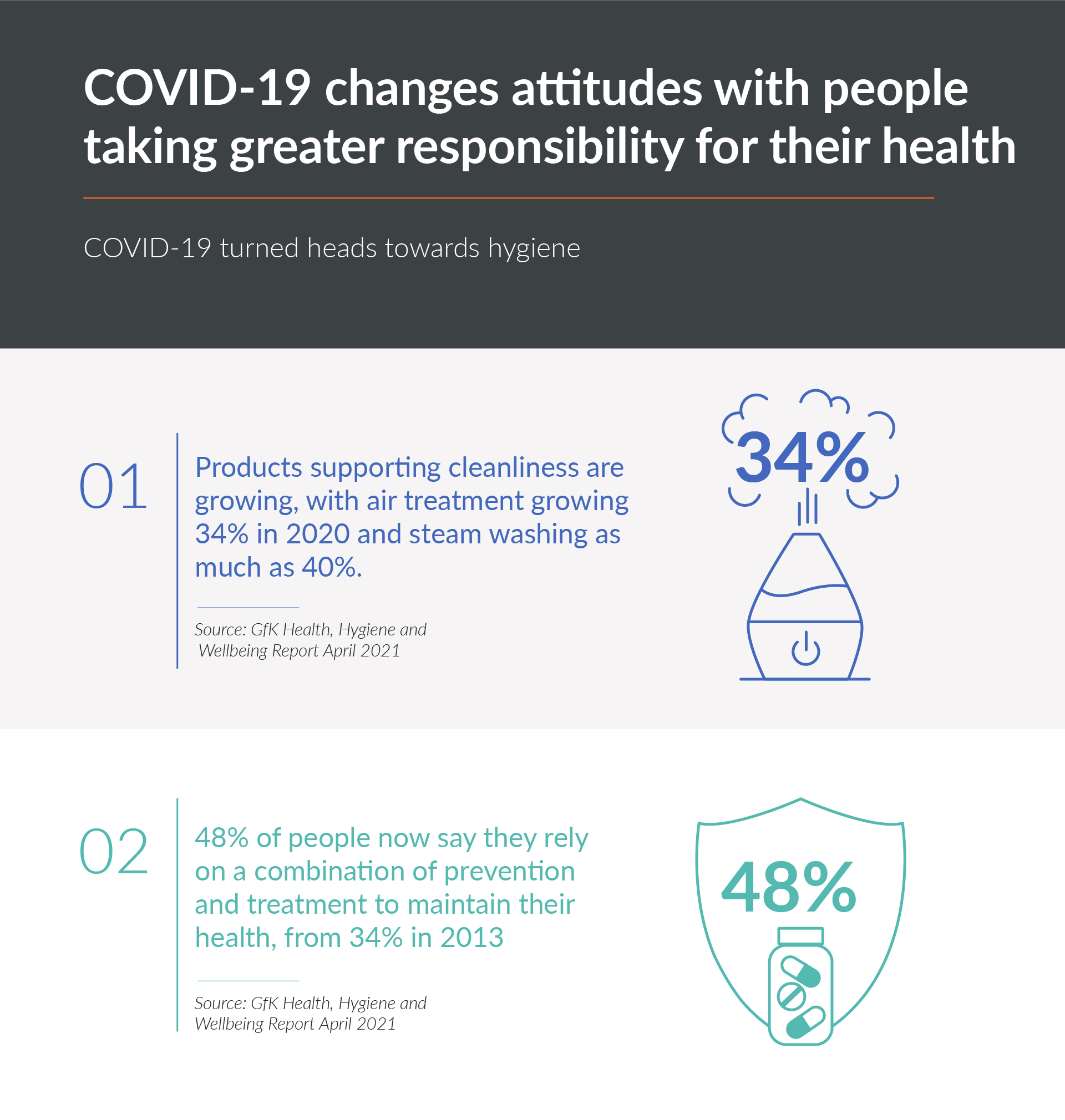
More consumers are focused on health and hygiene trends
In the early days of the pandemic, products that professed to combat airborne pollutants like viruses, and those that supported better hygiene, experienced strong growth. Air cleaning products grew 34% last year, humidifiers grew 13%, and dehumidifiers are up 25%. Water filters now have a 62% online share, marking a 10% increase from 2019, according to GfK’s latest Health, Hygiene, and Wellbeing Report. Under-sink filters also grew by 8%, and replacement cartridges for various water filters were up 20%.
During the initial months of the pandemic, we saw products such as air treatment systems grow because of the focus and marketing on how these products could help combat viruses in the air and clean the air you breathe. Considering COVID-19 was said to be airborne, consumers were buying a lot of these products hoping this would keep some allergens at bay.
Recognizing this trend, brands responded by updating their messaging and extending their product lines. They also used secondary data to their advantage. Realizing that more consumers were redecorating their homes, they centered the launch of a new air purifier on allergens and formaldehyde – a gas pollutant often released from furniture or paint.
Other products that experienced strong growth include home appliances with steam functionality to kill bacteria. GfK’s Health, Hygiene and Wellbeing Report April 2021 found that steam ovens grew 17% and washing machines with steam features as much as 40%.
The pandemic made consumers aware of how these products could be beneficial, acting as a catalyst to their growth. Consumers are becoming increasingly aware of health aspects and how to combat them on a daily basis using technology.
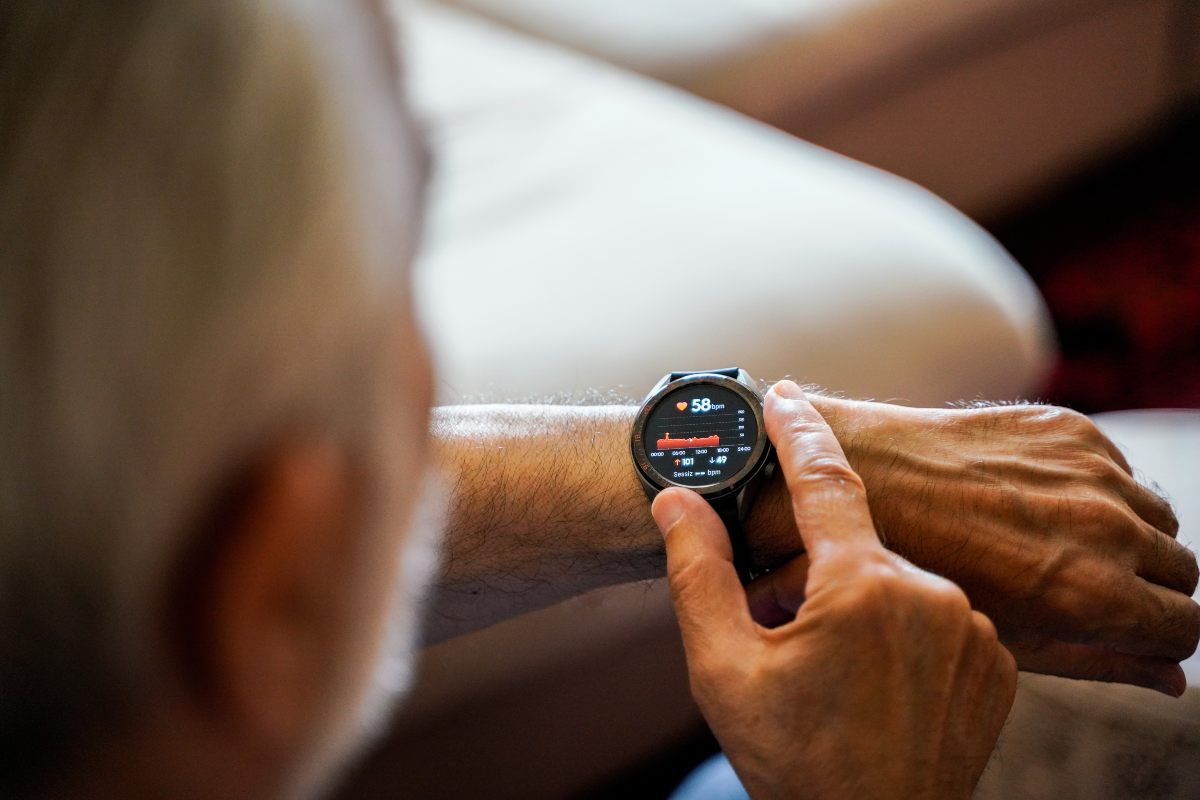
Personal diagnostic products and wearables also saw strong demand. In the UK alone, GfK consumer health data estimates 22% of all consumers now own an activity tracker. Digital thermometers grew 400% in April 2020, smart personal scales are growing by 46%, and smart blood pressure thermometers, as much as 58%, according to GfK’s Health, Hygiene and Wellbeing Report April 2021. These devices, which give people more control over managing their health, also support doctors in making more accurate diagnoses, virtually.
In fact, the rapid roll-out of telehealth, plus an increasingly favorable patient perception, has fuelled a huge investment spree in the sector, which received 3x the level of venture capitalist investment in 2020 than it had in 2017.
Home gym equipment and services were also in high demand. Peloton, the bike company, more than doubled sales to $4bn in the year to 30 June 2021. And consumers spent a record 113 million hours using health and fitness apps during the week of March 22, 2020.
How can brands respond?
The brands that did well during the pandemic effectively communicated the specific benefits their products could bring to consumers in a pandemic world. Communications need to focus on use cases and facts, which aren’t always prevalent or visible to the consumer.
Wagatha agrees that “you need to have your sensors up and be quick to innovate and fast to market.” And a big part of this is analyzing and dissecting different consumer groups, recognizing that not everyone had the same attitude and fears as a result of the pandemic. For example, you could separate your consumer base into different age groups, analyze their purchase behavior and use this to tailor your outreach.
And he adds that “brands need to be continuously monitoring and understanding how their consumer groups are evolving, emerging or even becoming increasingly distinct from each other. In doing so, you will be able to tailor your product, your communication and even find new areas of opportunity.”
What’s next in health trends?
The focus on health and hygiene isn’t likely to wane anytime soon, with GfK’s latest Health, Hygiene, and Wellbeing Report finding that as many as 38% of consumers say they’re passionate about their health and wellness. This preoccupation is being reflected in their spending, with health and wellbeing one of the fastest-growing small domestic appliance sectors in 2020, according to GfK’s latest Global SDA Trends Report.
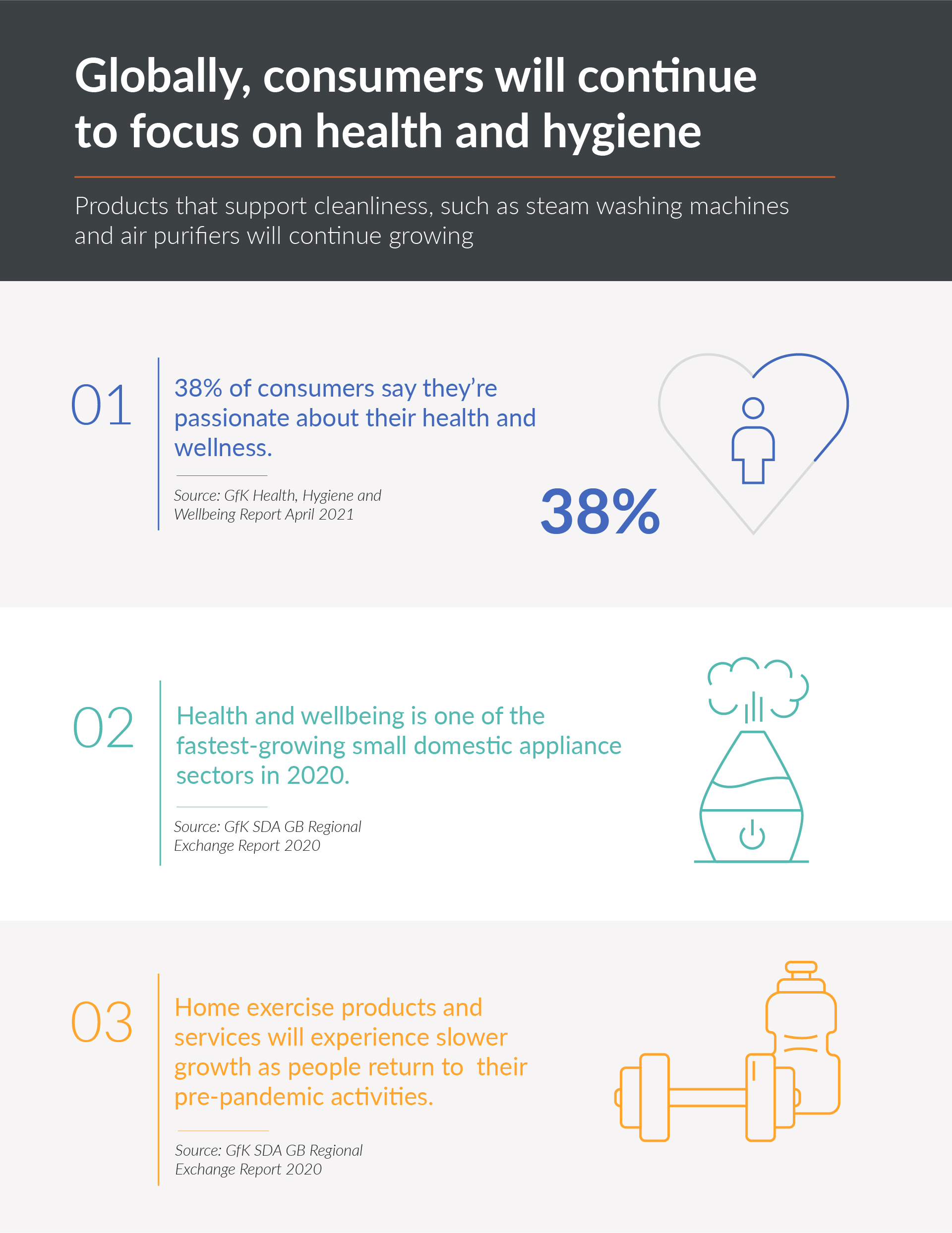
Hygiene will likely remain “top of mind,” says Wagatha, which means products that support cleanliness should continue to see growth. Steam washing machines, for example, are predicted to continue to grow and COVID-19 provided the “necessary tipping point” for growth in Europe for air treatment systems.
The sector is also seeing plenty of innovation, with portability becoming increasingly important, such as LG’s PuriCare wearable air purifier mask. Small air purifiers that look more like portable speakers are readily available. LARQ and LA-vie have a range of water bottles that feature UV light to purify drinking water on the go. And Bosch has released a new portable fabric refresher that removes unpleasant odors without the need for added chemicals.
Digitization of health is a trend that will also continue to evolve, Wagatha believes, and one in which the pandemic has only accelerated as consumer confidence and trust in technology has grown. In fact, GfK’s latest Health, Hygiene and Wellbeing Report found that as many as 45% of global consumers are interested in smart products that capture and transfer their health data to healthcare providers.
The bigger question mark looms over personal fitness and whether consumers will return to the activities they enjoyed before the pandemic or will continue to exercise at home. Although sales of some home exercise products are already declining, and for ‘fad’ personal diagnostics ‘products growth will likely slow, the industry will continue to reinvent itself The more options, the better.”

